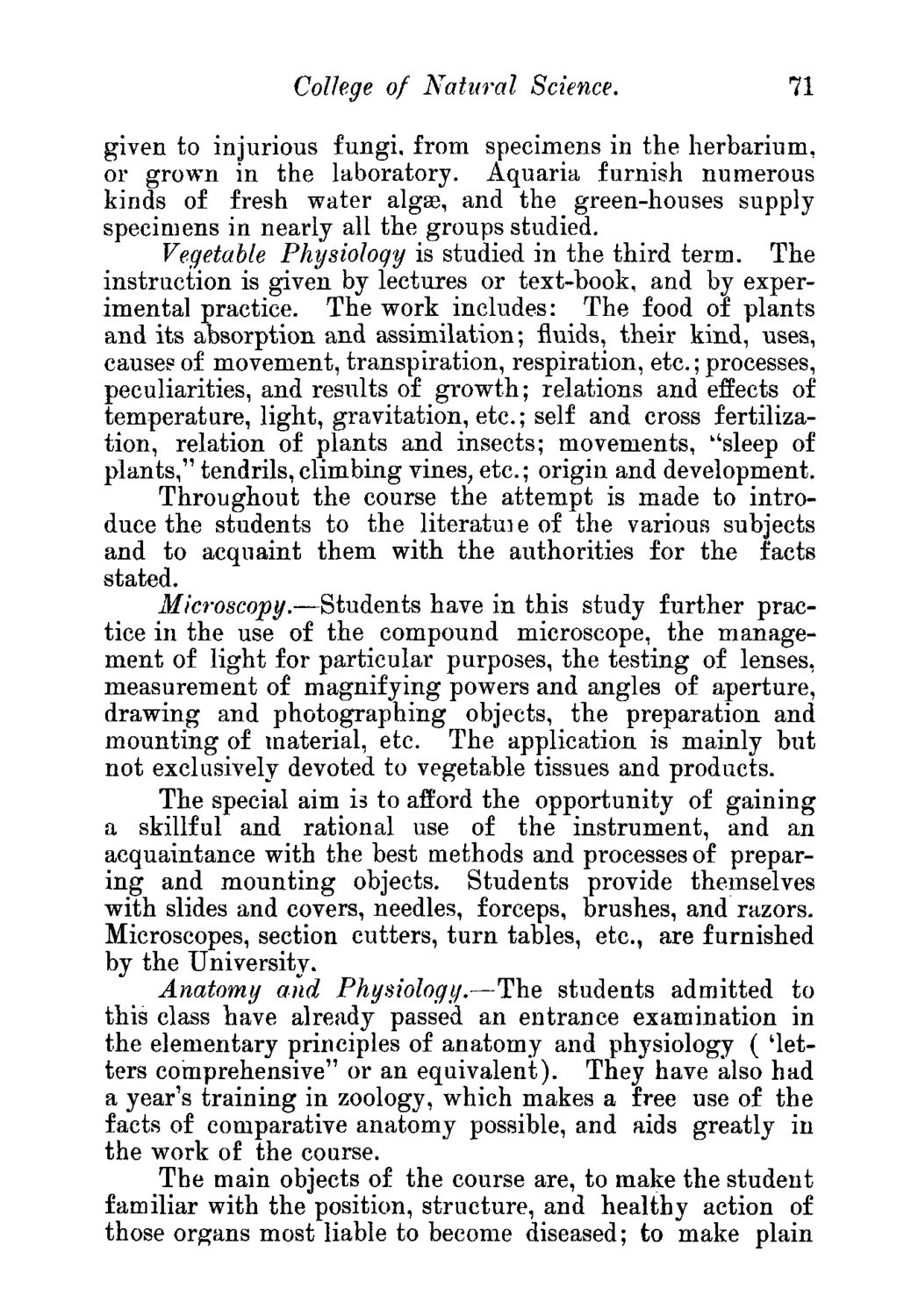| |
| |
Caption: Course Catalog - 1886-1887
This is a reduced-resolution page image for fast online browsing.

EXTRACTED TEXT FROM PAGE:
College of Natural Science. 71 given to injurious fungi, from specimens in the herbarium, or grown in the laboratory. Aquaria furnish numerous kinds of fresh water algse, and the green-houses supply specimens in nearly all the groups studied. Vegetable Physiology is studied in the third term. The instruction is given by lectures or text-book, and by experimental practice. The work includes: The food of plants and its absorption and assimilation; fluids, their kind, uses, causes of movement, transpiration, respiration, etc.; processes, peculiarities, and results of growth; relations and effects of temperature, light, gravitation, etc.; self and cross fertilization, relation of plants and insects; movements, "sleep of plants," tendrils, climbing vines, etc.; origin and development. Throughout the course the attempt is made to introduce the students to the literatme of the various subjects and to acquaint them with the authorities for the facts stated. Microscopy.—Students have in this study further practice in the use of the compound microscope, the management of light for particular purposes, the testing of lenses, measurement of magnifying powers and angles of aperture, drawing and photographing objects, the preparation and mounting of material, etc. The application is mainly but not exclusively devoted to vegetable tissues and products. The special aim is to afford the opportunity of gaining a skillful and rational use of the instrument, and an acquaintance with the best methods and processes of preparing and mounting objects. Students provide themselves with slides and covers, needles, forceps, brushes, and razors. Microscopes, section cutters, turn tables, etc., are furnished by the University. Anatomy and Physiology.—The students admitted to this class have already passed an entrance examination in the elementary principles of anatomy and physiology ( 'letters comprehensive" or an equivalent). They have also had a year's training in zoology, which makes a free use of the facts of comparative anatomy possible, and aids greatly in the work of the course. The main objects of the course are, to make the student familiar with the position, structure, and healthy action of those organs most liable to become diseased; to make plain
| |